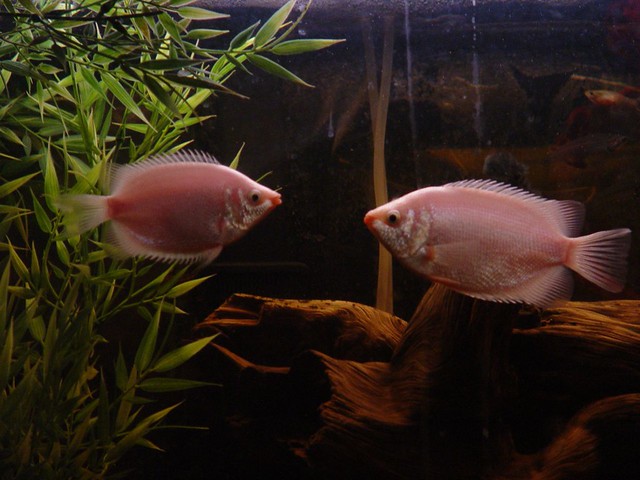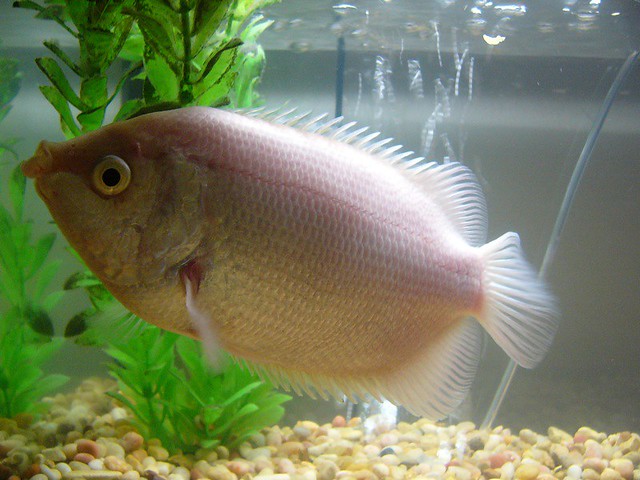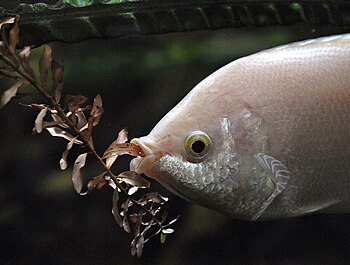 |
| Photo by Clevergrrl |
The green colored Kissing Gouramis have a dark bar bordering the dorsal and anal fins. The pink or flesh-toned fish have silvery scales. Their bodies are oval shaped and they have thick fleshy lips, with rows of fine teeth in their mouths, which is great for chewing down plants to the stem. Because of those teeth, you will need to have plastic plants or sturdy Java fern in their tank.
They need plenty of room, as they grow to six inches or more in length. An aquarium of at least 45-gallon is advisable. They are not particular about most water conditions but thrive best in temperatures of 75 - 82 degrees.
Kissing Gouramis can become quite quarrelsome and most of them are masters at bullying. Watch for signs of aggression, especially with other species. They should only be housed with another medium to large sized breeds and even then watch them for signs of showing others who's boss.
These fish have big appetites and enjoy flaked foods, Tubifex and brine shrimp. For optimum health, offer them fresh Romaine lettuce and cooked peas. Kissing Gouramis are also big algae eaters. Driftwood in the aquarium is a good idea, as this provides them with many algae. They will also suck off algae on the sides of the tank and pebbles.
It is near impossible to differentiate between the two sexes. You will finally know you have a male and female when you see that some "kissing" is going on along with circling and nudging. This means spawning has begun. Next, the male wraps his body around the female. She releases several hundreds of eggs which is then fertilized by the male. If there is a large leaf of Romaine lettuce floating on the surface of the water, the eggs will adhere to them after floating upwards.
Naturally, many of these eggs will be eaten, but some "dads" will become protective and keep a close eye on these eggs, chasing away fish that get too close. The eggs will hatch approximately in one day. And two days later you will have many free swimmers. Now is the time to remove the fry to another tank.
The best way to feed the tiny fry is to press a cooked egg through a cheesecloth. As they become larger and they can fit flaked food into their mouths, you can begin weaning them from the egg. Feed them baby brine shrimp too.
Kissing Gouramis are easy to fish to maintain in the aquarium. As long as they are provided with a good diet and plenty of room to grow and swim, you can expect these hardy fish to live approximately 5 years.
Article Source: EzineArticles |





